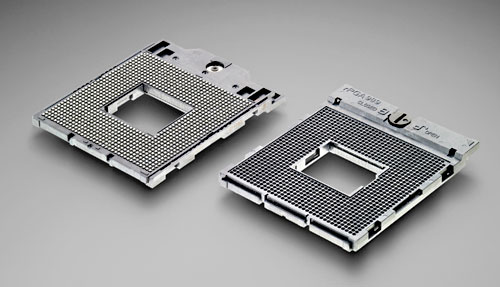About G1 rPGA 989 Socket
About G1 rPGA 989 Socket
Socket G1, otherwise called rPGA 988A (there are Socket G/rPGA 989 attachments that can take Socket G1/rPGA 988A or Socket G2/rPGA 988B bundled processors), is Intel's CPU attachment for their line of versatile Core i7, the successor to the Core 2 line. It is taking into account Intel's Nehalem building design which was most readily accessible for the 1366-pin "Attachment B", which, in the same way as its antecedent, LGA775, utilizes the LGA attachment setup. Later took after the upgraded LGA-1156 attachment, which moved the QPI and PCI-express controller off the Northbridge and onto the CPU. As a consequence of the lower pin check, LGA-1156 frameworks, and later, attachment G1 frameworks, can just run in Dual-channel memory mode, rather than the Triple-channel mode which is extraordinary to the LGA-1366 stage (and ensuing Xeon attachments). The Nehalem's portable variation was discharged on September 23, 2009 as the i7-720QM, 820QM, and 920XM models, took after by the i7-740QM, 840QM, and 940XM models on June 21, 2010. The more up to date CPUs utilize the new Clarksfield center, which kept up the same 45 nm assembling process as the desktop-based Nehalems. Nehalem got a pass on therapist on January 7, 2010, under the center name of Westmere. With the Intel GMA HD Graphics Ironlake center bundled onto the CPU substrate, however not incorporated straightforwardly to the processor pass on, it goes ahead to make the Arrandale-based line. The current CPUs to utilize this bundle are the Core i7-6x0M arrangement, the Core i5-4x0M arrangement, the Core i5-5x0M arrangement, the Core i3-3x0M arrangement, lastly the Pentium P6x00 arrangement and Celeron P4x00 arrangement which were discharged on March 28, 2010. Nonetheless, not these are accessible for Socket G1, as some of them are just accessible in a BGA bundle. They are otherwise called PGA988 attachment processors.

Socket G1, otherwise called rPGA 988A (there are Socket G/rPGA 989 attachments that can take Socket G1/rPGA 988A or Socket G2/rPGA 988B bundled processors), is Intel's CPU attachment for their line of versatile Core i7, the successor to the Core 2 line. It is taking into account Intel's Nehalem building design which was most readily accessible for the 1366-pin "Attachment B", which, in the same way as its antecedent, LGA775, utilizes the LGA attachment setup. Later took after the upgraded LGA-1156 attachment, which moved the QPI and PCI-express controller off the Northbridge and onto the CPU. As a consequence of the lower pin check, LGA-1156 frameworks, and later, attachment G1 frameworks, can just run in Dual-channel memory mode, rather than the Triple-channel mode which is extraordinary to the LGA-1366 stage (and ensuing Xeon attachments). The Nehalem's portable variation was discharged on September 23, 2009 as the i7-720QM, 820QM, and 920XM models, took after by the i7-740QM, 840QM, and 940XM models on June 21, 2010. The more up to date CPUs utilize the new Clarksfield center, which kept up the same 45 nm assembling process as the desktop-based Nehalems. Nehalem got a pass on therapist on January 7, 2010, under the center name of Westmere. With the Intel GMA HD Graphics Ironlake center bundled onto the CPU substrate, however not incorporated straightforwardly to the processor pass on, it goes ahead to make the Arrandale-based line. The current CPUs to utilize this bundle are the Core i7-6x0M arrangement, the Core i5-4x0M arrangement, the Core i5-5x0M arrangement, the Core i3-3x0M arrangement, lastly the Pentium P6x00 arrangement and Celeron P4x00 arrangement which were discharged on March 28, 2010. Nonetheless, not these are accessible for Socket G1, as some of them are just accessible in a BGA bundle. They are otherwise called PGA988 attachment processors.


















Post a Comment